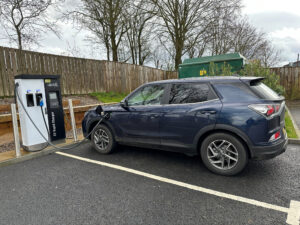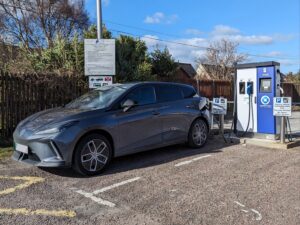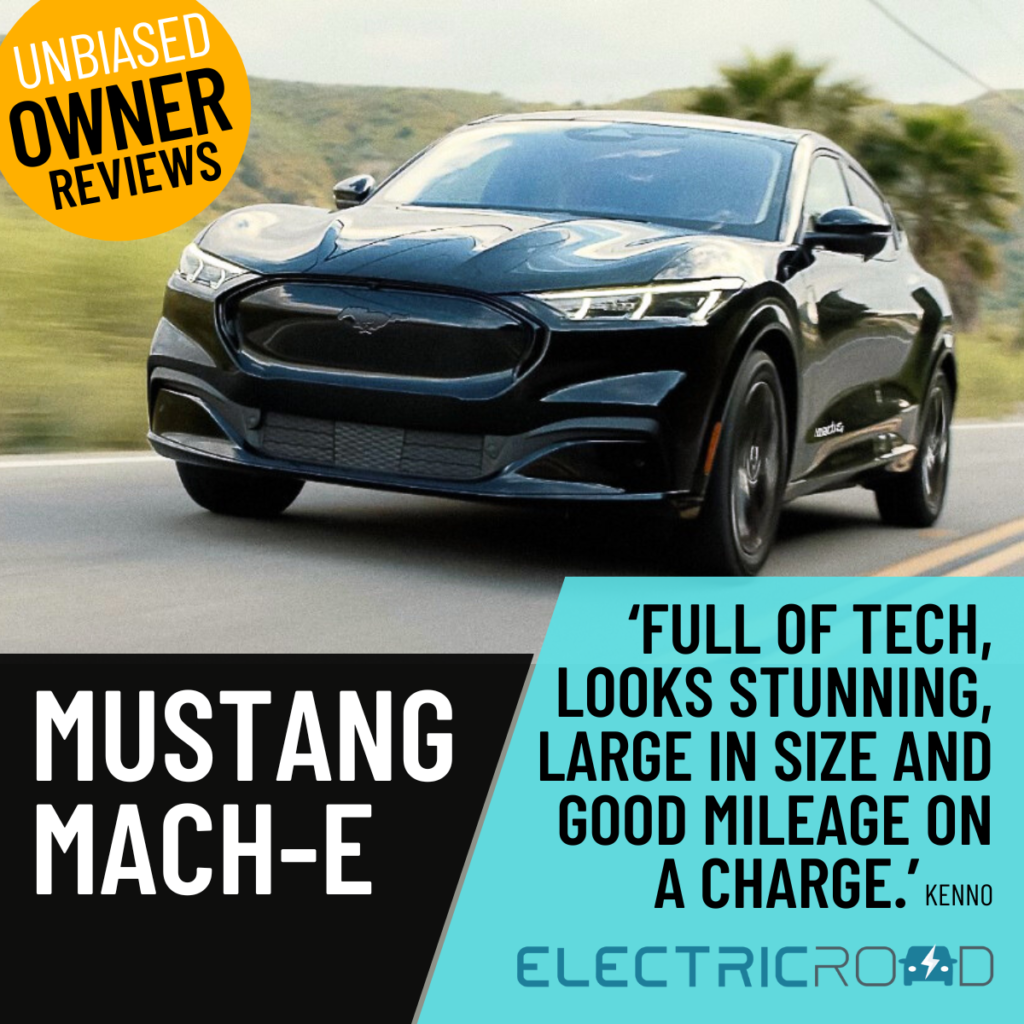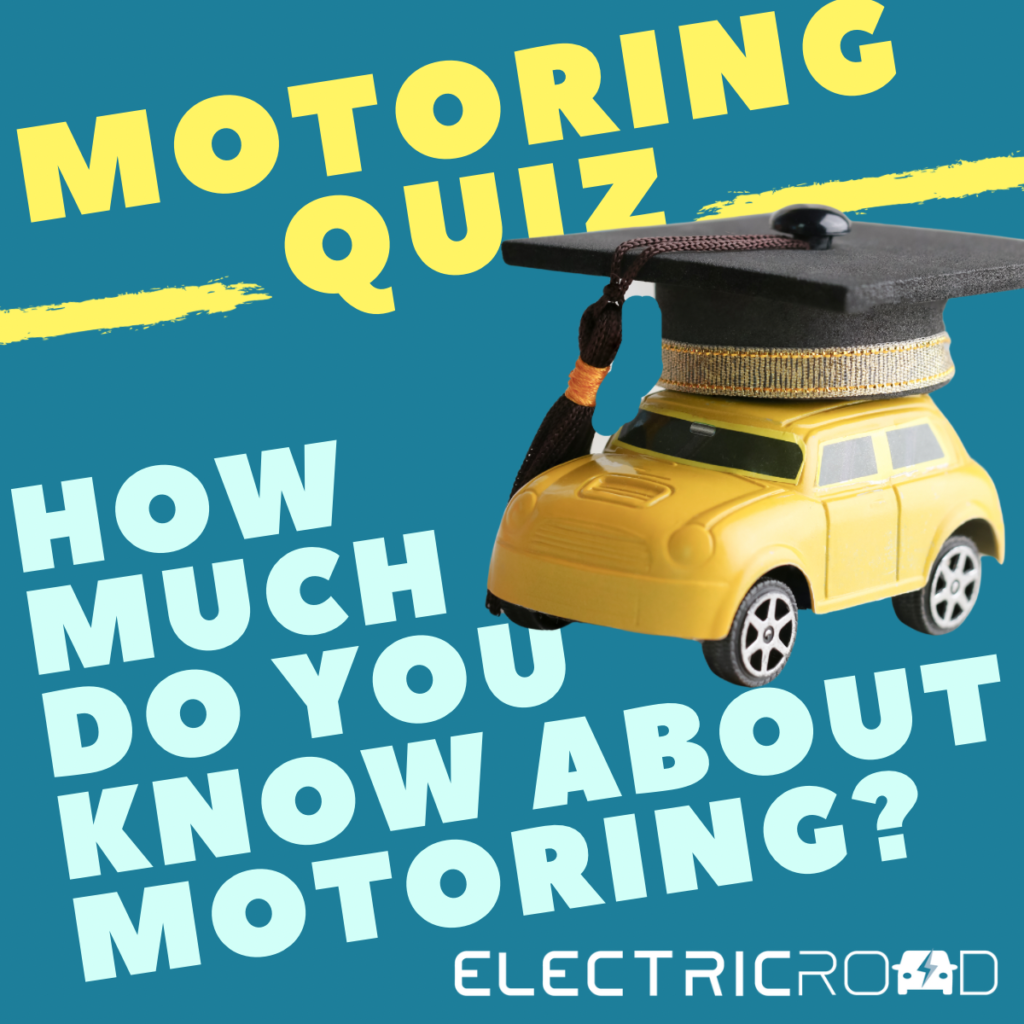Renault claims the ZOE is now better than ever, with the third-generation model offering increased power and range, a host of technological improvements and more sophisticated character throughout. On the exterior, ZOE continues to deliver distinctive design, with a fresh interpretation of the chic styling themes established by the previous model.
On the exterior, ZOE continues to deliver distinctive design, with a fresh interpretation of the chic styling themes established by the previous model. Inside, the completely redesigned interior has a more modern, and elegant environment, with the addition of more premium materials and the latest connectivity and features.
Innovative features enhance the driving and ownership experience, including increased connectivity, Renault’s state-of-the-art EasyLink infotainment system and a configurable 10-inch TFT driver display. A B Mode, increases regenerative braking and allows one-pedal operation to make urban driving easier, while a range of advanced driving aids make journeys safer and more enjoyable.
Get our FREE ‘Renault Zoe Guide’ e-mailed directly to your inbox
All models now come with an electronic parking brake, replacing the traditional style handbrake. This has doubled storage space on the centre console and passengers have access to two USB sockets that can be used to charge smartphones, tablets and portable games consoles.

Powertrain
Thanks to Renault’s leadership in electric powertrain development, ZOE is even more enjoyable to drive than its predecessors, offering responsive performance both in the city and on the open road. In addition to the existing 80kW R110 electric motor (which is carried over unchanged), a new 100kW R135 motor joins the range to offer even more spirited pace.
When developing ZOE, Renault engineers utilised the increased capacity of the Z.E. 50 battery to get the most out of its electric powertrain. In the R135, torque is now a powerful 245Nm, available from zero rpm. The result is strong acceleration from standstill, with a 0 to 60mph time of just 9.5 seconds. Real world responsiveness is even more impressive, with 50 to 75mph achieved in just 7.1 seconds. The R110 version is capable of 0-60mph in 11.4 seconds and offers only slightly less torque, with a healthy 225Nm.
Both motors come with a new B mode function which maximise the regenerative braking effect to allow convenient ‘one-pedal’ driving in many situations. When this mode is activated, ZOE decelerates rapidly as soon as the driver releases the accelerator pedal. It means that in urban or slow moving traffic the driver rarely needs to use the brake pedal at all, making driving easier and more relaxing. Standard D mode provides more traditional driving characteristics, while in both modes a new braking system offers improved feel through the pedal. ZOE has a new e-shifter to allow the driver to switch between B and D modes using only gentle pressure on the selector.
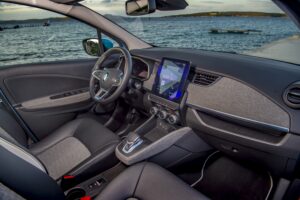
Range and charging
Renault’s commitment to continually improving battery technology keeps ZOE one step ahead in the EV revolution, with a new 52 kWh Z.E. 50 battery that gives a useable range of up to 245 miles (WLTP) – an increase of around 30 per cent over the old 41 kWh pack. It now also offers rapid direct current (DC) charging, in addition to the alternating current charging (AC) options already available. And despite the increase in range and capacity, the battery itself has not increased in size, so there’s no impact on interior space or practicality. In addition, the Z.E. 50 battery helps to deliver significantly stronger performance, when twinned with the new R135 electric motor.
The new battery is an example of the way ZOE continues to make EV ownership a more accessible and viable option for consumers. At its launch in late 2012, the first ZOE featured a 22kWh battery capable of around 93 miles of realworld range – enough to satisfy the daily needs of the average European driver.
The second-generation model, launched in 2016, introduced a 41kWh Z.E. 40 battery which doubled the real-world range to 186 miles. Now, the Z.E. 50 battery in New ZOE offers a range that far exceeds the average daily mileage of most drivers, as well as faster, more versatile charging options. Charging the ZOE is as easy as ever. Cleverly hidden behind the Renault diamond logo at the front of the car, the new Combo plug (CCS) is slightly larger than the previous example and consists of both a European standard socket and a two-pin connector for DC charging.
The central location of the socket makes charging easier, especially at public charging stations that have their own cable. With this plug, ZOE is able to charge quickly using a direct current (DC) of up to 50kW, simply by inserting the terminal’s charging cable into the two-pin connector below the type-2 socket. The standard type-2 cable supplied with the car is used for everyday AC charging at home or work, in a car park, or at a public charger.
Wherever ZOE is charged, Renault’s patented on-board Chameleon charger adapts to the source used, ensuring that the car is drawing the maximum amount of power as safely and quickly as possible. Thanks to this Renault-specific feature, ZOE can use a charging point with up to a 22kW supply and accept Range and charging 12 the unit’s maximum power rate, whereas some electric cars are limited to 7kW or 11kW, even if the charger has a higher-rated output. Using a public 22kW charger, ZOE’s Z.E. 50 battery can be charged from zero to 100 per cent in just three hours.
For a quick top-up, a one-hour charge gives a range of 78 miles. The fastest recharge times are achieved with the new 50kW DC charging option, which charges the battery from 0 to 80 per cent capacity in just one hour and ten minutes. A 30-minute charge is all that is needed to provide a 90-mile boost in range, allowing drivers on longer journeys to significantly extend their range while they take a short break.
Renault’s faith in its EV technology is backed up by an eight-year/100,000- mile warranty (whichever comes sooner) for the Z.E. 50 battery. This is in addition to the five-year/100,000-mile warranty that covers the rest of the car.

Cost
ZOE appeals to the head as much as the heart, offering low running costs and real ease of ownership. That starts with the fact that ZOE remains one of the most affordable new EVs on the market, with prices starting from just £27,495 for the R110 Z.E. 50 Play model. This price is after the government’s Plug-in Car Grant (PiCG) of £2,500, which every ZOE buyer can take full advantage of thanks to its zero CO 2 emissions and long-range.
Residual values are expected to be very strong, building on the exceptional performance of the previous ZOE on the used market. In fact, independent research from car buying platforms suggests that prices of certain used ZOE models went up, rather than down, during 2019. Low energy costs also help to make ZOE very affordable in the long-term.
A full battery charge typically costs less than £5, based on the car being charged overnight using an Economy 7 tariff, and this provides a range of up to 245 miles. At the time of writing, a typical petrol car with similar performance and dimensions would use approximately £27 worth of fuel to cover the same distance, according to official WLTP figures.
Using the same criteria, the cost of electricity to cover 10,000 miles in ZOE would be just £204, whereas the same petrol-powered compact car would use approximately £1,700 worth of fuel. Thanks to its zero CO 2 emissions and sub-£40,000 price, ZOE owners don’t have to pay any road tax (VED), while they are also exempt from paying both London’s Congestion Charge (£11.50 per day) and its Ultra Low Emission Zone Charge (an additional £12.50 per day).
There are additional financial benefits for business users, too, with recent tax changes resulting in significant savings for those running an electric vehicle as their company car. For the 2021/22 tax year, ZOE owners will pay zero Benefit-in-Kind (BiK) tax, while for the following two years they will be taxed on just 1 percent and 2 percent of the car’s P11D value respectively.
See owner reviews here





